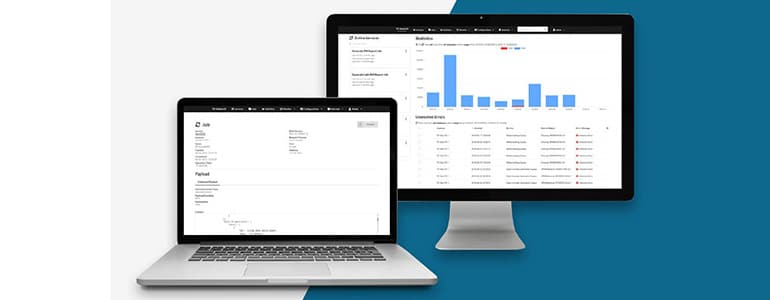
Understanding the Benefits of PLM ERP Integration
Table of contents
- The Benefits of PLM-ERP Integration
- What Can PLM ERP Integration Do?
- Improved Product Data Management
- Streamlined Workflows and Reduced Errors
- 6 Essential PLM & ERP Integration Capabilities
- 1. Create Engineering Item
- 2. Send EBOM or MBOM
- 3. Convert and Send PDF
- 4. Synchronized Attributes
- 5. Change Management
- 6. Update from ERP
- In Our Experience…
This offers greater visibility into business processes, leading to more informed decision-making capabilities. Additionally, by eliminating manual processes and reducing human errors, enterprises can enjoy improved productivity and cost savings.
The Benefits of PLM-ERP Integration
There are several benefits to integrating your product lifecycle management (PLM) and enterprise resource planning (ERP) systems. One significant advantage is improved communication between departments, which reduces errors and delays caused by miscommunication or lack of information sharing.
Additionally, PLM-ERP integration increases efficiency by streamlining processes and automating tasks, allowing organizations to optimize their use of resources. Finally, integrated systems offer better data management capabilities, enabling businesses to make better-informed decisions based on accurate, up-to-date information.
Overall, PLM-ERP integration can revolutionize a company’s product development process and help them stay ahead in a competitive marketplace.
What Can PLM ERP Integration Do?
Improved Product Data Management
One of the key benefits of PLM-ERP integration is improved product data management. With integrated systems, data collection and storage become more efficient, accurate, and organized.
This means that businesses can easily access and analyze product information from multiple sources and use it to make informed decisions about design changes, production processes, or quality control measures.
By having a centralized view of all product-related data, companies can reduce errors and inconsistencies caused by working with disparate systems or manual processes. The result is a more streamlined and optimized product development cycle that takes less time and resources to complete.
Streamlined Workflows and Reduced Errors
PLM-ERP integration can greatly improve workflows and reduce errors in product development. By bringing together product lifecycle management and enterprise resource planning systems, businesses can automate many routine tasks, reducing human error and improving efficiency.
This also allows teams to focus more on innovation, rather than spending time manually collecting and updating data. With streamlined workflows, businesses can achieve quicker time-to-market for new products, reduce costs associated with manual processes, improve collaboration across departments, and ultimately increase revenue.
By integrating PLM and ERP systems, businesses can optimize their key processes and gain a competitive edge in today’s fast-paced market.
6 Essential PLM & ERP Integration Capabilities
Now that we understand some benefits of PLM-ERP integration, let’s go through six essential capabilities to consider when choosing an ERP and PLM integration solution.
1. Create Engineering Item
One of the essential capabilities in an ERP and PLM integration is to sync a unique number on an Engineering Item creation, in either system. This unique identifier enables search within your other systems and data integrity.
2. Send EBOM or MBOM
Sending the Physical Product structure to ERP when the parent object is validated is crucial. This capability enables the BOM structure to be available for ERP users.
3. Convert and Send PDF
Converting documents to PDF and sending documents related to a Physical Product to your ERP system when the physical product is released is another essential capability to consider. This functionality ensures that these PDF documents are available on the material reference in your ERP.
4. Synchronized Attributes
When an Engineering Item is released, synchronizing attributes from your PLM to ERP is critical. This functionality ensures that these values are accurate and available for ERP users.
5. Change Management
Synchronizing changes of release and revised designs. This enhances collaboration between departments and improves the data quality.
6. Update from ERP
Synchronizing attributes from ERP to PLM when the ERP information is changed is essential. This capability ensures that these values are accurate and available for PLM users.
In Our Experience…
Enterprise systems integrations are critical to the success of modern organizations. By integrating various systems and processes, businesses can improve their efficiency, reduce errors, and improve collaboration between teams. This integration can also provide greater visibility into business processes, better decision-making capabilities, and the flexibility to scale operations as the business grows.
Choosing the right ERP and PLM integration solution with these six critical capabilities will enable your business to manage product development, engineering, and production processes efficiently. With the right solution, you can streamline operations, increase efficiency, reduce errors, and improve collaboration between teams.
Don’t worry – creating digital continuity across systems is a common challenge.
That’s why we developed TECHNIA Integration Framework to simplify the integration of cloud or on-premise installations of 3DEXPERIENCE with other enterprise systems.


